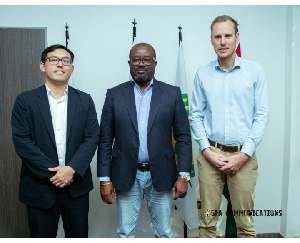Opinions of Sunday, 5 May 2019
Columnist: Benjamin Owusu-Antwi Jnr.
Public health surveillance, a tool to the betterment of the health status of our nation
As humans, a nation, we try to set standards/measures in order to check on our daily activities so we don’t act overboard. These measures guide our lives and so when something happens out of that measures, we tend to find solutions to them as soon as possible. Supposing if there are no measures, we might act the way we want, we might not know whether things are right or wrong and it will be difficult to even know when there is a problem. Some of these measures could be rules, constitution, and maxim among others.
As healthcare professionals, there must be laid down procedures that will check on the health status of our people. These procedures will help us to know when there is the need for an intervention and what is necessary to be included in the intervention itself, this lead us to our topic PUBLIC HEALTH SURVEILLANCE.
Public Health Surveillance, according to the World Health Organization (WHO), is the continuous or ongoing, systematic collection, analysis, and interpretation of health-related data essential to planning, implementation, and evaluation of public health practice, closely integrated with the timely dissemination of these data to those responsible for prevention and control. That is to say, one don’t just collect any data but the data collected must be relevant to the development of the intervention.
Public Health Surveillance can be active or passive. In active Public Health Surveillance, the health facilities are visited so that the medical records of the facility are looked-into in order to identify a specific disease. A passive Public Health Surveillance is the type of surveillance system whereby there is a regular and ongoing reports of health-related issues (diseases) by health facilities in a given area.
How is this a tool to the betterment of the health status of our nation? It is a tool because;
A) It will help healthcare professionals to be able to know whether there is an epidemic or not. This is so because, in both systems (active or passive), there is monitoring of the healthcare facilities to know the health status of the people in which the health facility is situated. And so when there is a peak or rise in how frequent the facility is being used by the people with a particular condition, because of the record keeping and review, the health facility will be able to identify the condition and find solutions to it.
B) It will also help the healthcare givers to know whether the interventions they gave or put in place are working or otherwise. Since in public health surveillance there is an analytic aspect, healthcare givers will try to analyze the data they have, whether there is an epidemic or an existing intervention is working or failing. This will help them either improve on that particular intervention or change it.
C) It will help the healthcare givers to Identify patients and their contacts for treatment and intervention. Since the data of the individuals who attend the health facility is collected, it will help healthcare givers to trace them and treat them, so that they don’t go on infect others with it.
To end, with these points above, I think if this system, Public Health Surveillance, is strengthened, the health issues (disease) of our nation will decline and “huge” resources (funds) that are assigned to the health sector will reduce, because there are little or no health issues in the system to fight against and that the little funds allocated to the health sector will be able to cater for the people since the health status of the citizens are good in shape.











